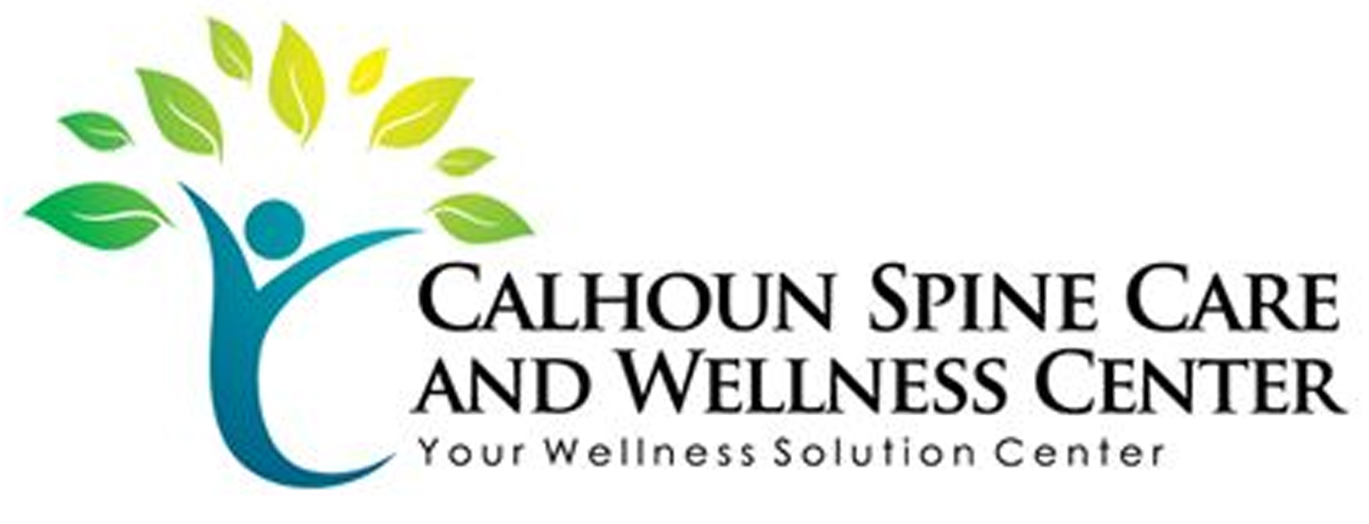If you're struggling with sciatica pain in Calhoun, you're not alone, and finding affordable relief options doesn't have to be overwhelming. You might consider local community clinics that offer low-cost physical therapy or chiropractic care tailored to your needs. Additionally, exploring natural remedies and effective home exercises can greatly complement your treatment. But what if there are even more resources available that you haven't yet tapped into? Understanding the full range of options could be the key to managing your pain effectively.
Understanding Sciatica Pain
Sciatica pain can really throw you off balance, impacting your daily life in ways you mightn't expect. This pain originates from the sciatic nerve, which runs from your lower back down through your hips and legs. When this nerve gets compressed or irritated, it can lead to discomfort that radiates from your lower back into one or both legs. You might feel sharp jolts of pain, tingling sensations, or even weakness in your legs, making it hard to perform everyday tasks.
You may find that certain movements, like bending or lifting, exacerbate the pain. Sitting for long periods can also be a struggle, leaving you restless and uncomfortable. It's crucial to recognize how sciatica manifests in your body. For many, the pain can be one-sided, often affecting only the leg on the side where the nerve is compromised.
Understanding the triggers of your sciatica can help you manage the condition more effectively. Common causes include herniated discs, spinal stenosis, or muscle tightness in the lower back and hips. Being aware of these factors can guide you in identifying activities or positions that aggravate your symptoms.
Keeping track of your pain patterns and discussing them with a healthcare professional can help pinpoint the root cause and lead to more targeted relief strategies. By gaining insight into your sciatica pain, you're taking an important step toward finding effective solutions for your discomfort.
Benefits of Physical Therapy
How can physical therapy help ease your sciatica pain? Engaging in physical therapy can greatly reduce your discomfort and improve your overall mobility. A skilled physical therapist will assess your condition and design a personalized treatment plan tailored to your specific needs. This approach not only addresses the underlying causes of your sciatica but also helps alleviate symptoms.
One of the key benefits of physical therapy is that it focuses on strengthening the muscles surrounding your spine and pelvis. By improving strength, flexibility, and posture, you can relieve pressure on your sciatic nerve. Regular exercises can also enhance your range of motion, making everyday activities less painful.
Additionally, physical therapy often incorporates manual techniques, such as massage and mobilization, which can help alleviate pain and tension in your back and legs. These hands-on methods promote blood flow and facilitate healing, speeding up your recovery process.
Moreover, your therapist will educate you on proper body mechanics and ergonomics, empowering you to avoid movements that exacerbate your pain in the future. This knowledge can be invaluable in preventing recurrences of sciatica.
Lastly, physical therapy can be a cost-effective option for managing sciatica. With affordable treatment plans available in Calhoun, you can access the care you need without breaking the bank.
Exploring Chiropractic Care
Many people find chiropractic care to be an effective option for managing sciatica pain. If you're struggling with discomfort that radiates down your leg, visiting a chiropractor may provide the relief you need.
This hands-on approach focuses on aligning the spine and relieving pressure on the sciatic nerve, which can greatly reduce your pain.
When you visit a chiropractor, you can expect a thorough assessment of your spine and overall health.
Here are three key benefits of chiropractic care for sciatica:
- Spinal Adjustments: Chiropractors use spinal manipulations to realign vertebrae that may be pressing on the sciatic nerve. This can help restore proper function and alleviate pain.
- Customized Treatment Plans: Your chiropractor will tailor a treatment plan specific to your needs. This may include a combination of adjustments, stretches, and exercises designed to strengthen your back and improve flexibility.
- Pain Management Techniques: Beyond adjustments, chiropractors often incorporate therapeutic modalities like ultrasound or electrical stimulation to reduce pain and inflammation.
Natural Remedies for Relief
When it comes to finding relief from sciatica, natural remedies can be a game changer.
Incorporating stretching exercises, applying heat or cold, and exploring herbal supplements can greatly ease your discomfort.
Let's take a closer look at how these options can help you feel better.
Stretching Exercises Benefits
Stretching exercises can be a game changer for sciatica relief, offering natural remedies that help alleviate pain and improve mobility. When you incorporate regular stretching into your routine, you may experience several benefits that contribute to your overall well-being.
- Increased Flexibility: Stretching helps loosen tight muscles around your lower back and legs, reducing tension that can exacerbate sciatica pain. Improved flexibility can lead to a greater range of motion, making everyday activities easier.
- Enhanced Blood Circulation: Stretching promotes better blood flow to your muscles and nerves, which can help speed up the healing process and reduce inflammation. This increased circulation may provide immediate relief and long-term benefits.
- Stress Relief: Engaging in stretching exercises can also serve as a form of relaxation. Reducing stress and tension is essential for managing chronic pain, allowing you to cope better with your symptoms.
Heat and Cold Therapy
Heat and cold therapy offers effective natural relief for sciatica pain, helping to soothe inflammation and promote healing. By incorporating both methods into your routine, you can target pain and discomfort in different ways.
Using heat can relax tight muscles and improve blood flow to the affected area. You might apply a warm towel, heating pad, or hot water bottle for about 15-20 minutes at a time. This simple approach can ease tension and enhance mobility, making it easier for you to get back to your daily activities.
On the other hand, cold therapy can numb sharp pain and reduce swelling. Applying an ice pack or a bag of frozen vegetables wrapped in a cloth to the area for 10-15 minutes can help alleviate acute pain. It's important to take breaks between applications to avoid skin damage.
Experimenting with the timing of heat and cold therapy can help you find what works best for your body. By using these techniques regularly, you can effectively manage sciatica symptoms and regain your quality of life without relying on expensive treatments.
Herbal Supplements Effectiveness
Many people find herbal supplements to be a valuable addition to their sciatica relief regimen.
These natural remedies can complement traditional treatments, offering potential benefits without the side effects often associated with medications.
However, it's important to understand which supplements can be most effective for your specific situation.
Here are three herbal supplements worth considering:
- Turmeric: Known for its anti-inflammatory properties, turmeric contains curcumin, which may help reduce pain and inflammation associated with sciatica.
- Ginger: Another anti-inflammatory powerhouse, ginger can alleviate discomfort and improve circulation, potentially easing nerve pain.
- Willow Bark: Often referred to as "nature's aspirin," willow bark has been used for centuries to relieve pain and may provide relief for sciatica sufferers.
Community Health Resources
In your quest for sciatica relief, community health resources can be invaluable allies. These resources often offer a range of services and support that can help you manage your pain effectively and affordably. Local clinics, for instance, frequently provide low-cost or sliding scale payment options, making it easier for you to access necessary treatments without breaking the bank.
You might also find support groups in your community, where you can connect with others experiencing similar challenges. Sharing your experiences and learning from others can be both comforting and empowering. These groups often have guest speakers, including healthcare professionals, who can provide insights and strategies for coping with your symptoms.
Additionally, many community centers offer wellness programs that focus on pain management and holistic approaches. Look for workshops on mindfulness, yoga, or physical therapy tailored for those dealing with sciatica. These programs not only promote healing but also foster a sense of community and support.
Don't forget to explore local libraries and online resources as well. They often have educational materials about sciatica, including coping strategies and the latest research on treatment options.
Cost-Effective Exercise Options
When it comes to managing sciatica, incorporating cost-effective exercise options can make a significant difference in your recovery journey. You don't need a pricey gym membership or fancy equipment to get moving and alleviate pain.
Simple, targeted exercises can be done at home, helping you strengthen your core and improve flexibility, which is vital for sciatica relief.
Here are three effective exercises you can easily incorporate into your routine:
- Pelvic Tilts: Lie on your back with your knees bent. Tighten your abdominal muscles and push your lower back into the floor, holding for a few seconds before releasing. Repeat 10-15 times. This strengthens your core and stabilizes your spine.
- Knee-to-Chest Stretch: While lying on your back, bring one knee to your chest while keeping the other foot flat on the floor. Hold for 15-30 seconds, then switch legs. This stretch helps relieve lower back tension and can help alleviate sciatic nerve pain.
- Cat-Cow Stretch: Get on your hands and knees in a tabletop position. Inhale as you arch your back (cow), and exhale as you round it (cat). Perform this sequence 10-12 times. This dynamic stretch increases flexibility and reduces tension in your back.
Tips for Long-Term Management
To manage sciatica long-term, you'll want to focus on a few key strategies.
Incorporating regular stretching exercises, setting up an ergonomic workspace, and using effective pain management techniques can make a big difference.
These steps can help you maintain comfort and mobility in your daily life.
Regular Stretching Exercises
Regularly incorporating stretching exercises into your routine can greatly alleviate sciatica pain and improve overall mobility.
Stretching helps relieve tension in your muscles and promotes better blood flow, which can reduce discomfort.
Here are three effective stretches you should consider adding to your daily routine:
- Piriformis Stretch: Lie on your back with your knees bent. Cross one leg over the other so your ankle rests on the opposite knee. Gently pull the uncrossed leg toward your chest until you feel a stretch in your buttock. Hold for 30 seconds and switch sides.
- Hamstring Stretch: Sit on the floor with one leg extended and the other bent. Reach toward your toes on the extended leg while keeping your back straight. Hold this position for 20-30 seconds, then switch legs.
- Cat-Cow Stretch: Get on your hands and knees. Inhale as you arch your back (cow position), then exhale as you round your back (cat position). Repeat this for 1-2 minutes to improve flexibility in your spine.
Ergonomic Workspace Setup
In addition to stretching, setting up an ergonomic workspace can considerably contribute to long-term sciatica relief.
Start by ensuring your chair supports your lower back. An adjustable chair allows you to maintain a healthy posture, keeping your feet flat on the floor and your knees slightly lower than your hips.
Position your computer monitor at eye level to avoid neck strain. This way, you won't have to slouch or lean forward, which can exacerbate sciatica pain. Use a keyboard and mouse that are within easy reach, keeping your elbows close to your body at a 90-degree angle.
Consider using a footrest if your feet don't comfortably touch the ground. This helps maintain proper alignment of your spine.
If possible, alternate between sitting and standing throughout the day. A standing desk or a convertible desk can make this easy.
Don't forget to take short breaks every hour to stretch and walk around. This movement encourages blood flow and reduces stiffness.
Pain Management Techniques
Managing sciatica pain effectively requires a blend of techniques that fit your lifestyle and needs. To achieve long-term relief, consider incorporating the following strategies into your routine:
- Regular Exercise: Engaging in low-impact activities like walking, swimming, or yoga can strengthen your back and improve flexibility. Aim for at least 30 minutes most days to keep your muscles active and reduce tension.
- Heat and Cold Therapy: Applying heat or cold packs can alleviate pain. Use a cold pack for the first 48 hours to reduce inflammation, then switch to heat to encourage blood flow and relaxation.
- Mindfulness and Relaxation Techniques: Managing stress can profoundly impact your pain levels. Techniques such as deep breathing, meditation, or progressive muscle relaxation can help you cope with discomfort and improve your overall well-being.
Conclusion
Finding affordable sciatica relief in Calhoun is entirely possible with the right resources. By exploring community clinics, engaging in physical therapy, and considering chiropractic care, you can tackle your pain without breaking the bank. Don't forget to incorporate natural remedies and cost-effective exercises into your routine. With these options, you can take control of your sciatica and improve your quality of life. Stay proactive, and remember, you're not alone on this journey to recovery.



